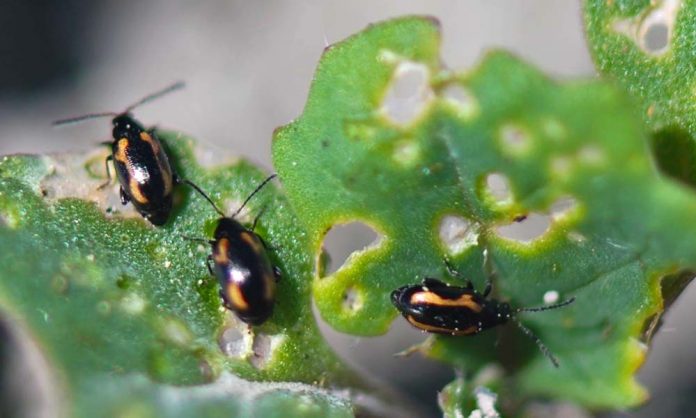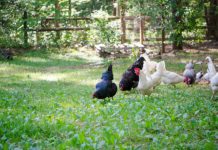There are many things that can happen to your garden that you wouldn’t even consider to be an issue, pests or diseases. Any of these can very easily wreak havoc, without a hint that it was there. Before an infestation can occur you need to know what to look for and ways to prevent it. There are many ways to do away with the problem at hand. You’d prefer to do that organically as with any gardener, but that’s not always an option.
Pests
When I think of pests I think of birds and rabbits. The use of fencing to protect the garden as a whole can eliminate these bigger pests from your garden. Seedlings can be protected from getting to the stem and roots with mulch to keep anything away. I also saw pie pans and CD’s hung up to discourage the pests because of the reflections and the noises they made. But your garden’s bigger pest problem comes in far smaller forms.
Beetles
The flea beetle is one which likely to feed on a young plant. They can eat away at the seedling leaves and then it doesn’t grow.
Aphids And Mites
The green aphid attacks the plant when it is young, leaving it wilted, and they can spread viruses as well. Mites feed on plant leaves leaving it deformed. Dip the plants in cold water to treat aphids and mites to wash off and kill them.
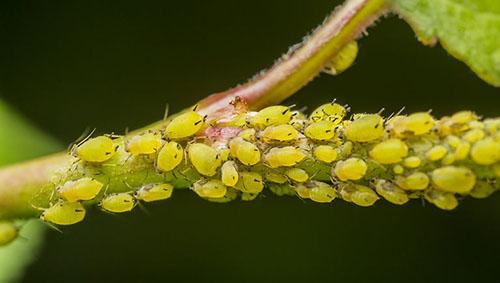

Caterpillars
The Caterpillars are feasting on plants but are not killing them. It is best not to kill the caterpillar but to share with them a few plants. You’ll be seeing butterflies in your garden soon enough.
Thrips
Thrips is a female insect not requiring a male to produce eggs. They are a tiny, yellow insect like a nymph and become darker as an adult. Thrips cut into the plant ‘s skin, and suck out the juices. Plants become splotchy, pale, silvery, and then die.
Related: Homemade Garden Pest Traps
Snails and Slugs
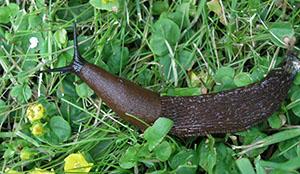

Slugs and snails are tiny bodied soft pests that feed in your yard. The difference is that the snail does have a shell while the slug doesn’t. You can use eggshells or diatomaceous earth around the plants to control them in your garden to prevent them from crawling over it, or pick them out by hand and dispose of them.
Carrot Root Fly
The female fly lays eggs in the dirt, and the eggs hatch into a legless creamy-white worm. The worms eat the plant’s roots and stunt its growth. For handle, you should add up for twice a week a portion of hydrogen peroxide to 10 parts of water.
Tomato Horn Worm
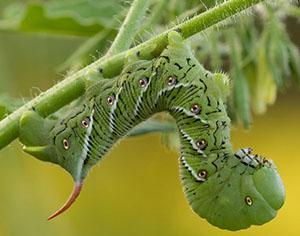

The horn worm is a green caterpillar with white and black markings over their body and a horn at its end. Well camouflaged among your plants, this pest can grow to be five inches long. The horn worm likes to feed on plants in the nightshade family such as tomato, pepper, potato, eggplant, and tobacco plants. In one night, that pest can destroy a lot. A helpful tip to find the horn worm is to look for droppings around the plant, a worm is in that area if you see dark droppings.
Cutworms
The cutworm is a green-brown caterpillar which lives on the ground. They feed on plant seedlings and young shoots just beneath the ground. Likes cutting the stem in half while feeding the cutworm. The cutworm is a non-crawling worm; therefore the easiest way to keep it from eating your plant is to build a barricade that it can not overcome. This can be as easy as a rolled newspaper to prevent your plant from getting through the soil.
Wire worms
Wire worms are Click Beetles’ larvae. They can grow up to 1 1/2 inches long and are colored in yellow to dark brown. They have a segmented hard shell and three pairs of legs in the segment just behind their head. The wire worm feeds on most plants in the fruit and vegetable garden. They tend to feed on the roots, seeds, stems, and tubers that cause them to wilt and die. The wire worm is difficult to eliminate since it is an underground feeder.
The use of a potato as bait is a good way to trap them. Spear sticks into the potato and bury it in the ground with a stick still showing around three inches. One can bury the potato traps about three to ten feet apart. The wire worm can feed inside the potato so dig up and discard all of your numbered potato traps in a week. Getting rid of the potato would also bring along the helpless wire worm. Do not compost the potato trap, as reinfestation will be allowed.
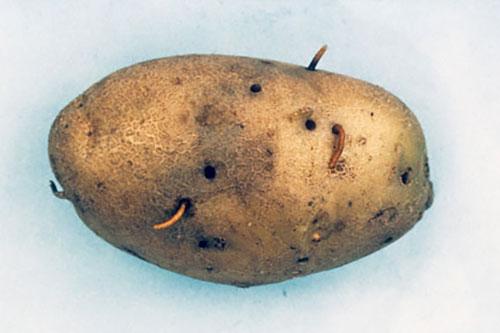

Related: How to Grow and Harvest Sweet Potatoes
Army worms
This worm will either eat holes in your leaves, or eat the entire leaf. The young larvae are one to two inches in size and are green-brown in color. You may need to remove them physically by hand or have a natural enemy that enjoys them, such as ladybugs or wasps, to rid the army worm.
Pests can be very noticeable in your greenhouse, or can be concealed in the soil or between plants. Being vigilant and taking extra steps to prevent an infestation is always a good idea. A smart way to stop pests at the end of the season is to always clean all the debris out of your yard. Neem oil is one good organic insecticide that you can use. These mischievous little buggers are probably better taken out by hand. Till the soil, six to eight inches deep, to help kill any dormant pests.
Diseases
Bacterial, viral and fungal diseases in your garden will vary. Some plants can be affected by either disease form and some are more susceptible to one over another.
Bacteria
Bacteria live in tissue which is depleted by oxygen. A good thing to bear in mind is to provide space between your plants to help prevent a bacterial outbreak in your garden. The space allows the plants to breathe. Another good way to avoid a bacterial infestation is to plant pathogen-free seeds and rotate your crops in the garden each year.
Bacterial Soft Rot:
This disease is causing more crop losses around the world. It can affect plant species of any kind. Soft rot is caused by soft spots soaked in water, sunken in color and brown.
Bacterial Leaf Spot:
This disease makes small water soaked spots between the veins of the leaf which turn dark brown into black in color. Overhead irrigation splashing the plants can cause this.
Bacterial Wilt:
This illness generally starts in younger plants. You’ll notice the leaves and stem wilting and fading. You can find a dark green ooze when you cut a seed, and see some streaks of water in the plant.
Basal Rot:
Also known as bulb rot this disease can infect both floral and crop bulbs. The shoots can fail to emerge from the soil, or grow stunted with a color ranging from yellow to red-purple shades.
Scab:
This bacterial disease indicates some portion of the plant or the produce getting crusty lesions. Infected plants show leaves that wither, and then drop off early. There is no treatment once a bacterial infestation has commenced. You will have to remove the infected plant from the garden altogether. Dispose of the plant in the trash by tying it into a separate bag, or burning the entire plant. Do not leave this in your garden or compost it.
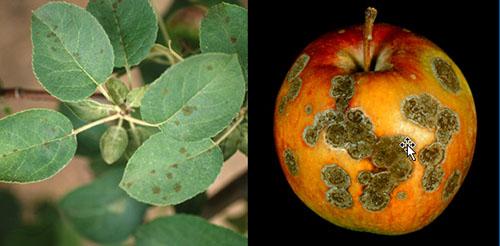

Fungus
The most common disease in the garden is a fungal infection in your soil or on the plants. An organic fungicide can be used to treat the fungus. Spores in the soil will spread a fungal infection between your plants. Prevention is the best protection in your garden regarding fungal disease.
Related: 10 Survival DIY Projects You Can Start on Your Property Right Now
Damping Off:
This disease is caused by soft rotting seeds which fail to germinate or die off as soon as they emerge from the soil. Plant seeds in well-drained soil, be sure not to over water.
Powdery Mildew:
The plant’s leaves, shoots, and stem may be covered in a white powdery growth. This disease is spread in the air and is more prevalent in shaded areas and thrives in high humidity.
Downy Mildew:
This fungus thrives in warm, cool surroundings. Downy mildew is a white mold which spreads all over the plant and causes it to fall over.
Leaf Spots:
The leaves start with yellow spots and then darken to brown and around it have a golden halo. The leaves wilt and then fall apart. Watering the soil is also a good practice, and trying not to get the plant and leaves really wet.
Smut:
Smut is an assaulting fungus, but not always killing seedlings as they grow. If the seedling survives it isn’t going to be healthy. The affected seedlings should grow a thicker plant on the branches, with dark blister spots. The smut can look like dirt on your seedling too.
Blight:
This fungus is also known as gray mold. The plant begins with yellowing, browning and wilting all of a sudden and then it dies. Blight prefers cool, and moist conditions.
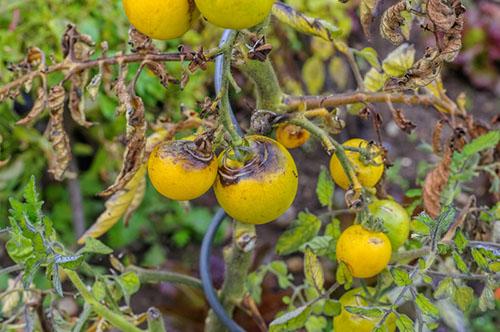

Purple Blotch:
This fungus produces violet blotches on the leaves and prefers warm and damp conditions. Purple blotch mostly affects onions.
Pink Root:
This fungus makes the bulb ‘s roots and outer layers turn pink and then darken to a deep purple. Rose root can cause the roots to shrivel and die.
Crown and Root Rot:
This disease causes leaves to turn yellow and brown, and the plant dies afterwards. Generally this is caused by the soil being too wet.
White Rot:
This fungus leaves tiny black dots on the leaves and plants. When you pull the plant you will notice that instead of white mold, there are no roots in its place. White rot can live up to 15 years in soil.
As usual, it is good practice to strive to use disease-free seeds while treating diseases in your garden. It’s also very helpful to rotate your crops and to plant your garden in soil with proper drainage. Using a fungicide works fine in controlling any fungal disease your garden may have. Do not compost the infected plant, since the fungus may later reinfest. Be careful not to contaminate the soil by walking in the old area and transferring it to the new area of plantation. A bit of work will go a long way to secure your garden.



